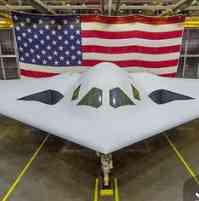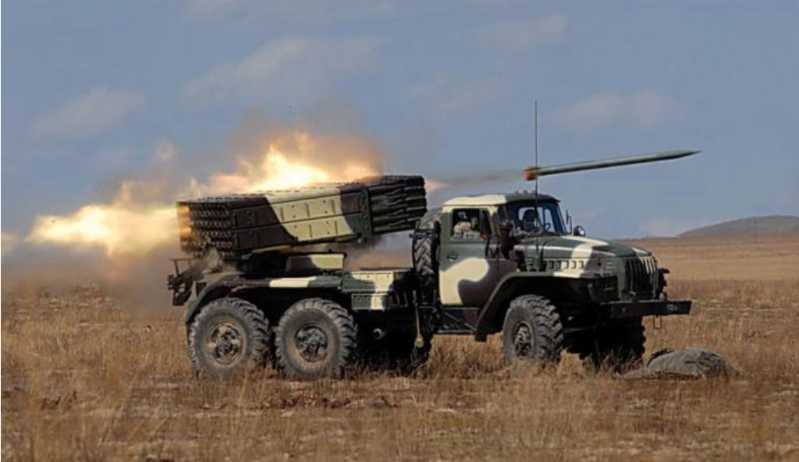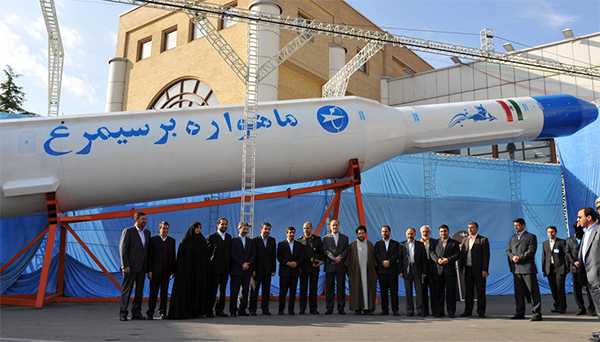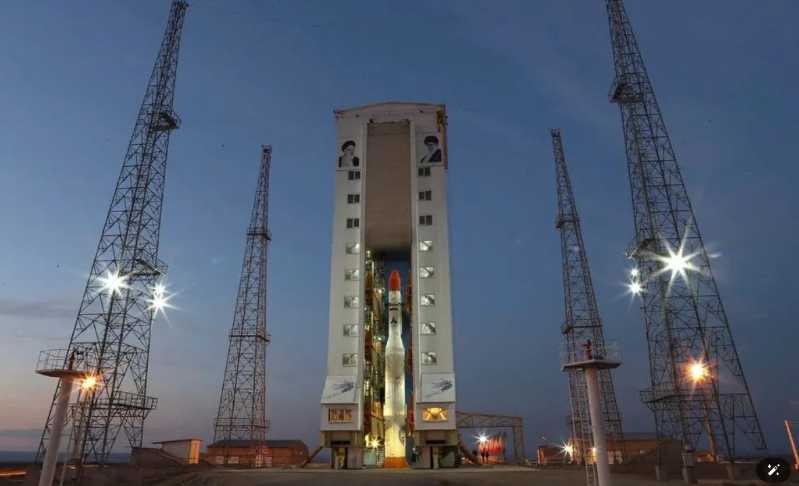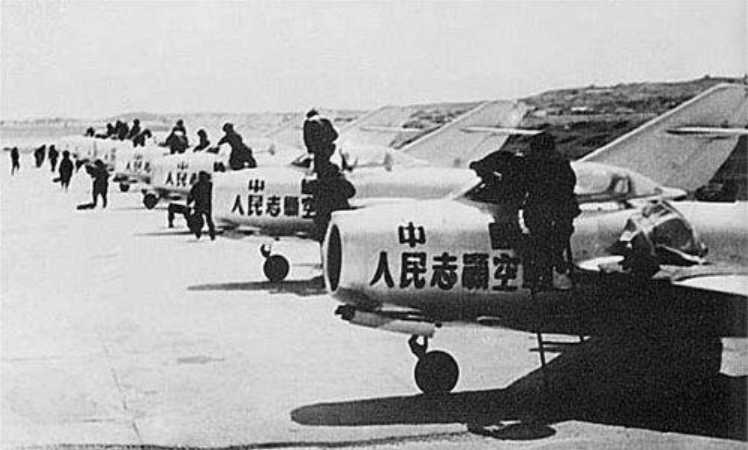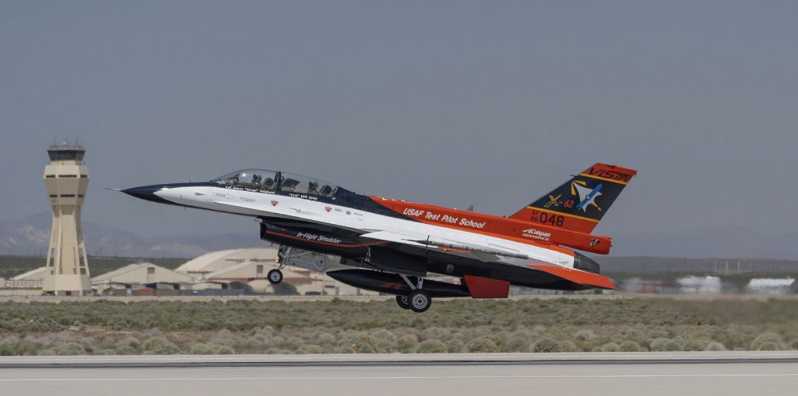If the number of buyers of an aircraft, the number of missions it has performed, and the length of time it has been in continuous production are used as the criteria, the C-130 Hercules military transport aircraft developed by the US Lockheed Corporation is undoubtedly the most successful military aircraft to date, without a doubt. Even if it is measured by its contribution in peacetime and wartime, the C-130 is well-deserved to be classified as one of the most important military aircraft in history.
This series of articles tells you about the past, present and future of the C130.
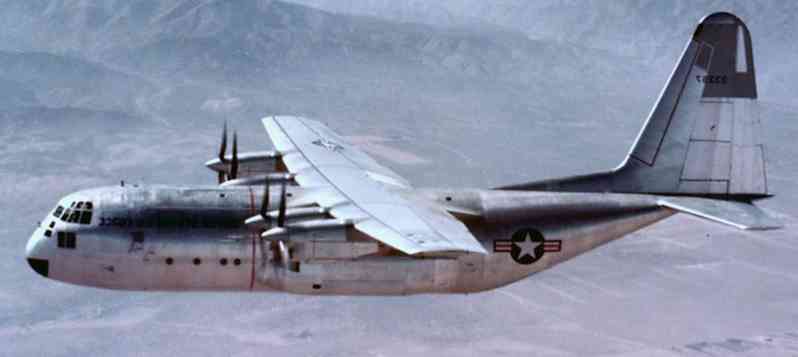
Since its first flight on August 23, 1954, the C-130 has gone through 70 years. Although the US Air Force B-52 Stratofortress strategic bomber, which is also in service with it, made its first flight earlier, it has long been discontinued. The C-130, which will continue to be produced, has become the world’s longest-running transport aircraft.
军用飞机。
Simple but omnipotent
The first impression of the C-130 transport aircraft by the contemporary public comes from the famous scene in the 2013 action movie "White House Has Fallen" where a hijacked US Air Force AC130 gunship strafed the White House.
However, in the real world, the C-130 transport aircraft’s most glorious moment undoubtedly occurred on July 4, 1976. In the raid on Entebbe Airport jointly planned by the Israeli military and the intelligence agency "Mossad", about 100 members of the Israeli special forces boarded four Israeli Air Force C-130 transport planes, and under the cover of eight F-4 "Phantom" fighters, they flew 4,000 kilometers at an ultra-low altitude of less than 30 meters without refueling, and rescued 102 hostages held by hijackers from Entebbe International Airport in Uganda. Only Lieutenant Colonel Jonathan Netanyahu, the commander of the commando, was killed on the Israeli side. He is also the brother of the current Israeli Prime Minister Benjamin Netanyahu. This unprecedented raid in the history of special operations not only made "Mossad" famous, but also concentratedly reflected the characteristics and important role of the C-130 transport aircraft.
It is this - the simple and unpretentious The C-130 Hercules transport aircraft looks so mediocre, with a fat fuselage squatting on the landing gear on both sides, an ugly spherical nose on the nose, and a dull and dull straight wing. The cruising speed of the latest model is less than 0.6 Mach. However, it is almost "omnipotent". Since its launch, it has quickly become the most important tactical transport aircraft in the United States. It is widely used by the US Air Force, Navy, Marine Corps and Coast Guard, and has maintained this position. In 2007, the C-130 became the fifth aircraft to serve continuously for more than 50 years. The other four are the Canberra bomber of the Royal Air Force of the United Kingdom, the B-52 bomber of the US Air Force, the Tu-95 bomber of the Russian Aerospace Forces, and the KC-135 tanker of the US Air Force. In 2019, the H-6 bomber of the Chinese Air Force also joined this ranks.
In addition to the United States’ own use, C-130 transport aircraft users are all over the world, with a total of 70 countries and regions, more than 70 modifications, and a total production of more than 2,600 aircraft. These ubiquitous transport aircraft not only perform a large number of military missions, but also frequently appear in various major disaster relief scenes. For example, in the Fukushima Daiichi nuclear power plant accident in Japan in March 2011, the C-130 was the first fixed-wing aircraft to rush to the disaster area for rescue.
However, how could Lockheed (later Lockheed Martin) come up with such an unimpressive product? Remember, this is Lockheed, the company that created the P-38 Lightning, SR-71 Blackbird, F-117 Nighthawk, F-22 Raptor, and C-5 Galaxy!
Compared with these "chosen ones", the C-130 is just a truck with wings, a goat nose, a propeller freak of the jet age. Its huge straight wings are like a big washboard, bolted to the top of the fuselage. Even Lockheed’s own meritorious designer, Kelly Johnson, the first head of the "Skunk Works", was once ashamed of it.
But later history proved that Kelly Johnson was wrong
Flying over 70 years
The C-130 Hercules is a four-engine turboprop military transport aircraft designed and manufactured by Lockheed Corporation of the United States. Its origins can be traced back to the Korean War in the early 1950s.
In that war, the U.S. Air Force used obsolete Douglas C-47, C-54, Curtiss C-46 and the latest Fairchild C-119 to undertake tactical air transport missions, while the fat Douglas C-124 "Globemaster!!" double-decker transport aircraft was the main force of strategic air transport. They all used piston propeller engines, exposing the obvious lack of power. Therefore, not only could they not carry really large tonnage of cargo, but many twin-engine transport aircraft would be dangerous if they lost an engine due to combat or failure when fully loaded. Even a four-engine C-124 could only climb 15 kilometers per minute if it lost an engine during takeoff. meters.
It took the U.S. Army six weeks to ship two divisions from the United States to North Korea to participate in the war, which shows that the U.S. air transport aircraft at that time lacked the necessary range and could not transport heavy weapons and equipment. In this situation, the U.S. military urgently needed an aircraft that could meet multiple transportation needs. The Pentagon set up a special committee to solve this problem, and the final design requirements were as follows:
The aircraft’s load capacity must not be less than 15 tons, and it can carry 92 infantrymen or 64 paratroopers; the combat radius when empty must not be less than 2,000 kilometers, and the combat radius when carrying cargo must not be less than 1,500 kilometers; it must be able to take off and land on unprepared simple short runways made of clay, sand or humus soil; it must be able to fly at 230 It can parachute at a speed of 1,000 meters per hour, and a slower speed is required for assault landings; it has a tail ramp that can be used in flight to drop heavy equipment, and a side door for dropping troops; it can load and unload large and heavy equipment including bulldozers, artillery and trucks; and it can continue to fly even if one engine is lost.
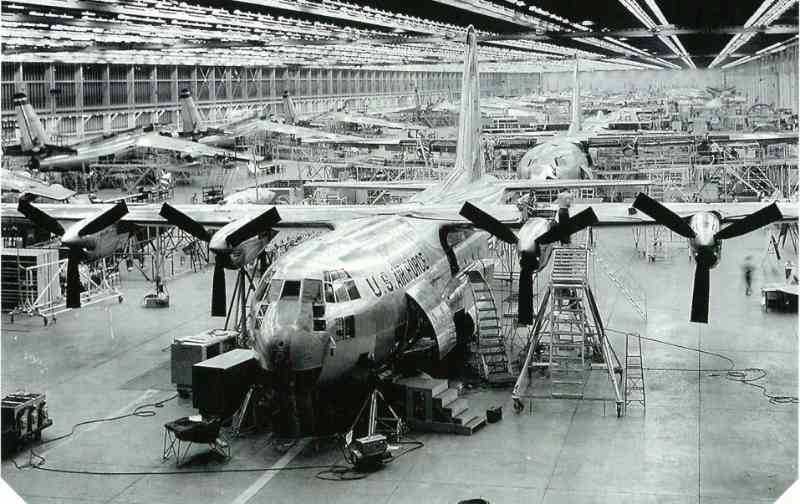
Under such harsh conditions, Fairchild, North American, Martin and Northrop refused to participate in the bidding. The competition was between the design proposals submitted by Lockheed and Douglas. The Lockheed proposal was led by Willis Hawkins, who was 37 years old and had just been the head of the company’s advanced design department for two months. When Hall Hibberd, the company’s vice president and chief engineer, brought the proposal to Kelly Johnson, the latter had no interest in the ugly shape and said to Hibberd: "If you sign this proposal, you will ruin Lockheed!"
However, Hawkins finally persuaded Hibberd and Johnson to sign and submit the design proposal to the US Air Force. Despite signing and agreeing that the proposal was a good design, Kelly Johnson was still not optimistic about the prospects of this aircraft. He said: "There is no market for it. We may only sell about 100 of them."
On July 2, 1951, Lockheed’s design code-named 82 won the bid. On August 23, 1954, Lockheed’s YC-130 prototype flew for the first time from the Lockheed factory in Burbank, California, and arrived at Edwards Air Force Base in Kern County, California 61 minutes later. Kelly Johnson flew with the Lockheed P-2V "Neptune" aircraft.
When the YC-130 only took about 260 After the Pentagon found the aircraft it needed, everyone, including Kelly Johnson, realized that Lockheed engineers had created another classic. By the way, Willis Hawkins later designed the Polaris missile and played an important role in the development of the M1 Abrams main battle tank when he served as Assistant Secretary of the U.S. Army Research and Development Department.
The first batch of production C-130A began to be delivered in 1956, and officially entered service with the U.S. Air Force in December of the same year, and was immediately put into use and modified. In 1958, a C-130A-I converted into an electronic reconnaissance aircraft was shot down by four MiG-17 fighters of the Soviet Air Force while performing a mission over Armenia, a Soviet republic at the time, becoming the first C-130 transport aircraft lost in combat.
In response to the main problem of insufficient range exposed during use, the U.S. Air Force began to introduce The C-130E has a 5,000-liter auxiliary fuel tank installed under the middle section of the main wing on both sides, and the engine power has also been improved. In addition, the fuselage structure and avionics equipment have also been strengthened and upgraded.
The C-130H, which began to serve the US Air Force in 1974, replaced the E model with a new engine and strengthened the central wing box to extend its service life. This model was produced until 1996, and many aircraft are still in service in the US military’s C-130 fleet.
In the 1990s, Lockheed launched the latest C-130J transport aircraft, which is also the only model currently in production. Although it looks similar to the previous C-130 aircraft, the C-130J has upgraded new electronically assisted control engines, switched to six-blade propellers, introduced digital avionics equipment and other new systems, which have greatly improved performance. It can be said that it is a completely new aircraft, so the name was changed to "Super Hercules".
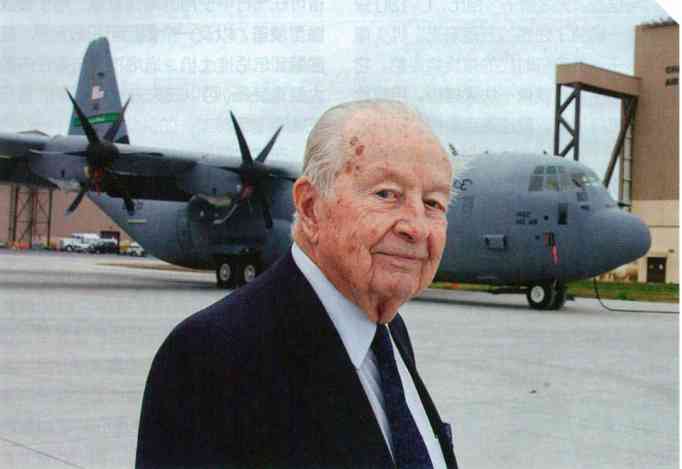
C-130J includes the ordinary type and the 4.57-meter-long C-130J-30, which first flew in 1996 and began to be delivered in 1998, replacing the C-130H on the production line. The new engine power of the "Super Hercules" has been greatly enhanced, so it is significantly superior to its predecessors in terms of flight speed, climb rate, practical ceiling and range. The digital cockpit and automatic flight control system have reduced the number of C-130J crew members from 5 to 3, including the pilot, co-pilot and loadmaster, eliminating the original navigator and aviation engineer, and fully integrating the night vision system from the beginning. In terms of interior design, the enhanced cargo handling system has greatly reduced the reconfiguration time of the cargo area from the previous 25 minutes to 5 minutes, allowing the aircraft to make better use of ground infrastructure and improve operational efficiency. In terms of reliability, the C-130J’s average component failure interval has been extended from about 1.7 hours to about 6.5 hours, making flights safer and reducing the cost of use throughout the life cycle.
Of course, all these benefits come at a price. The unit price of the aircraft is also rising rapidly. The unit price of the C-130E is about $11.9 million, while the C-130H has risen more than 2.5 times to $30.1 million, and the C-130J is as high as $75.5 million (in 2017 dollars). That is to say, with the money of one C-130J, you can buy 6 C-130Es with some left over!
The C-130 has been generating a steady stream of profits for Lockheed Martin for 70 years, and it will probably continue to do so for decades, which is definitely beyond Kelly Johnson’s imagination.
Secret of success: strong and versatile
Main modifications of the US military C-130
AC-130: armed gunship for close air support
DC-130: used for drone control by the US Air Force and Navy
EC-130: used for electronic warfare, psychological warfare, air battlefield command and control, and drug control, etc.
HC-130: used for search and rescue, refueling and aerial spraying operations, etc.
JC-130: a temporarily modified model used for flight testing and recovery of film cabins of drones and reconnaissance satellites, etc.
KC-130: used for aerial refueling and air support of the US Marine Corps
LC-130M: a model equipped with an ice and snow slide, used for polar support operations
C-130P: special operations model
C-130: maritime patrol model
RC-130: reconnaissance model
WC-130: weather reconnaissance model
L-100: civil model
There is no doubt that the C-130 will serve in the air forces of many countries for 100 years. This is an incredible achievement that even its design team, including chief designer Willis Hawkins, could not have imagined. The starting point of all this! It is the Allison T56 turboprop engine used by the C-130.
At the same time that Willis Hawkins’s team was designing the C-130, General Motors’ Allison Division was developing a powerful, lightweight turboprop engine, the T56, which made the C-130 the first American aircraft other than fighters and bombers to use a turboprop engine, and the first American production turboprop aircraft. The T56 engine was also largely ready when the C-130 was launched, one of the few engineering cases where a completely new airframe design was successfully matched to a new engine.
The T56 engine’s turbine shaft is directly connected to the reduction gearbox that drives the propeller. They both run at a constant speed, with the turbine speed just under 14,000 rpm and the reduction gearbox driving the propeller at 1,020 rpm, so they are very efficient. The throttle in the aircraft’s cockpit has no effect on the engine or propeller speed but only changes the pitch of the blades. Therefore, the noise from the start of the C-130 taxiing to the engine shutdown after landing is the same, but the volume is different. The power of the turboprop engine is far superior to that of the traditional piston propeller engine, and the fuel consumption and adaptability are better than those of the jet engine, so it is very suitable for the role positioning and needs of the C-130. The power response of the C-130 aircraft is direct and surging. There is neither the start-up time required by the jet engine nor the short lag of the piston engine. With the help of the innovative hydraulic power flight control device at the time, it is much more flexible to control than previous transport aircraft.
The early C-130A was equipped with four Allison T56-A-9 turboprop engines, each with a power of about 3750 shaft horsepower (about 2796 kilowatts), driving the three-blade propeller of Aviation Products. Because the diameter of each propeller is more than 4.57 meters, the blade tips of the two inner engines are very close to the fuselage, generating huge noise inside the aircraft. Therefore, the subsequent C-130B soon switched to Hamilton Standard’s four-blade propeller with a blade diameter reduced to 3.66 meters. In addition, the engine speed was constant and the propeller tip linear speed was slowed down. Both of these helped to improve the noise level inside the aircraft. Despite this, don’t expect to have a normal conversation in the cargo hold of the C-130.
The C-130H is equipped with the Allison T56-A-15 engine, and the power of a single engine is increased to 4590 shaft horsepower (about 3423 kilowatts). The latest model C-130J uses Rolls-Royce (acquired Allison AE2100D3 engine, the power of each unit is further increased to 4637 shaft horsepower (about 3458 kilowatts), driving Dowty Rotol R391 six-blade scimitar lightweight all-composite propeller. The new engine is equipped with Lucas’s full authority digital control system, which can realize automatic thrust control, making the minimum controllable flight speed of C-130J lower and enhancing the flight performance during short takeoff and landing. After 2000, Lockheed Martin and the US Air Force began to replace the C-130 with UTC’s eight-blade NP2000 propeller.
The powerful power can pressurize the cabin, allowing the C-130 aircraft to maintain 2500 meters at an altitude of 9800 meters. The cabin pressure is below 1 meter to ensure the efficient flight of the aircraft at high altitude. In order to adapt to the pressurization, the design team further strengthened the firmness of the fuselage, and finally made the C-130 a very sturdy transport aircraft. This is one of the key factors for the longevity of the C-130.
In fact, starting with the C-130A, this aircraft can maintain flight with only one engine. In the early days of service, a C-130A was hit by hail in a thunderstorm and lost the power of three engines, but eventually landed at Pope Air Force Base in North Carolina with the only remaining engine. Another C-130A once lost three engines due to fuel contamination over the Pacific Ocean. It was carrying about 4.5 tons of cargo and 25 soldiers who hurriedly put on life jackets. It insisted on flying to Clark Air Force Base in the Philippines.
C-130 The high-wing design is adopted. The huge vertical tail can increase the stability and controllability during low-speed flight. The high-positioned horizontal tail facilitates the installation of a large cargo door and ramp at the rear of the aircraft, which is convenient for the entry and exit of cargo and personnel. The main landing gear is large and simple, and can be retracted into the fuselage pod without occupying the cargo hold space. It also adopts the most basic straight-up and straight-down retraction method, without fancy and complicated connecting rods and gear folding mechanisms. The wheels are fat and low-pressure, and two are installed in series on each side. The front tire compacts the ground to facilitate the passage of the rear tire. The spacing between the wheels on both sides is narrow enough to allow the C-130 to take off and land on the highway.
The turboprop engine allows the C-130 to adapt to very harsh environments. It is the largest aircraft ever to use unprepared landing fields on a daily basis. Of course, larger jet transport aircraft such as the C-17 "Globemaster III" and C-5 "Galaxy" have also conducted acceptance test takeoffs and landings on simple runways to prove that they can do so when necessary. However, jet engines have a relatively low tolerance to the environment. The C-17 and The C-5 needs to be cleaned and maintained immediately after landing on an improvised runway, and often needs to be repaired, which is obviously impossible in actual use scenarios.
The cargo hold of the C-130 is spacious and neat, with no obstructions in the middle. It can accommodate a variety of detachable payloads, so that it can be flexibly switched between transport aircraft and other types of aircraft, and has strong versatility. The height of the belly from the ground is the same as that of a truck chassis, so it has true roll-on/roll-off capability. This inherits the characteristics pioneered by the C-123 transport aircraft.
The combination of excellent designs in all aspects makes the C-130 a very reliable transport aircraft. According to the records of the Royal Air Force, in 40 years of use, the accident rate of the C-130 is about one aircraft lost every 250,000 flight hours, second only to the Vickers VC-10 and Lockheed L-1011 "Tristar" passenger aircraft, which have no flight losses. According to a 1989 statistic, the overall loss rate of the US Air Force C-130A/B/ aircraft was 5%, which was higher than the loss rate of 1-2% for commercial airliners but much lower than the loss rate of 10% for B-52 bombers and 20% for fighters, trainers and helicopters.
Due to the above characteristics, the C-130 has undergone many modifications and has almost become an all-round aircraft. Considering that there have been many cases of using the C-130 as a bomber in actual combat, and the "Speed Dragon" project recently developed by the US Air Force also uses C-130 and other transport aircraft as long-range weapon delivery platforms, it seems that the only role that is not suitable for the C-130 is the fighter aircraft starting with "F".
Therefore, the C-130 has become a model of "one-specialization and multi-functionality" for military transport aircraft. The so-called "one-specialization" refers to the three major elements of modern air mobility: "air transport, aeromedical evacuation and aerial refueling", which the C-130 can successfully complete. The "multi-function" has greatly expanded the application scope of the C-130, bringing unexpected benefits to the military and the developer Lockheed Martin.
What makes it stand out
There are three direct reasons that help the C-130 stand out among many military transport aircraft.
First, before the advent of the C-130, the precise demand demonstration of the US military and the subsequent development trend of world military air transport were basically in line, creating a "good foundation". It is the largest tactical transport aircraft in the world, and it can be said to be unique at the time. Some other aircraft can take off and land in a shorter distance, some can cope with worse landing areas, some have a longer range, and some have a larger load capacity, but only the C-130 has these features for the first time in history.
Secondly, the C-130’s solid structure and spacious space inadvertently left ample room for subsequent improvements. It can carry nearly 20 tons of payload, from the world’s highest plateau airport in the Himalayas to the ice in Antarctica, and can fly to almost any corner of the earth to meet the transportation needs of different users. Moreover, the versatility of installing different payloads to play different functions is the key to the success of the C-130. With an almost unlimited use of the fuselage, versatility and wide reach are organically combined.
Third, the design of the C-130 defines the model of modern military transport aircraft. World War II-era military transport aircraft such as the C-46 and C-47 use piston engines and are of a fixed rear three-point landing gear design. They can only rely on manpower to load and unload cargo, and the load capacity is not large. Until the emergence of the C-130, its own success told the world how modern military transport aircraft should be designed. All subsequent transport aircraft, including McDonnell Douglas’s C-17 and Lockheed’s own C-141 and C-5, followed the same basic design concept as the C-130.
However, these technical advantages alone cannot guarantee the long-term success of the C-130. No matter how prescient the original design of Willis Hawkins’ team was, the aircraft would not have survived 70 years if it had not kept up with the times. The key to the C-130’s becoming an "evergreen" military transport aircraft is that the U.S. Air Force and Lockheed have continued to invest in new technologies, launch new models, and apply new equipment to improve the performance of the aircraft for 70 years. Only in this way can the C-130 fly from the early Cold War to the present, from the purely mechanical age to the digital information age. Today’s C-130J Super Hercules is like the difference between the C-130A of 70 years ago and the electric cars that are popular now.
Even so, it would be difficult for the C-130 to achieve the huge success it has now if it is too expensive to use. In fact, its moderate cost is an important selling point, especially for international customers. This aircraft not only costs less to purchase than jet transport aircraft, but also provides more functions in many cases. Due to its simple and rugged design, the C-130 is also inexpensive to use and maintain, despite having to fly frequently in less than ideal environments. The latest C-130J has reduced crew size, improved fuel efficiency, introduced more reliable digital electronic systems, reduced maintenance requirements and enhanced maintenance convenience, further strengthening this advantage.
Finally, stability of demand is also essential to the success of the C-130. The long-term stable demand of the US Air Force and the expanding global user base have enabled Lockheed to maintain continuous production for 70 years. C-130. On the other hand, if an aircraft production line is shut down, the technical and worker teams that understand all aspects of the design and manufacturing of this model will be dispersed to other projects. Once this loss exceeds a certain "threshold", it is almost impossible to recover. Even if it is forcibly rebuilt, the cost will be very high.
To this day, the C-130 still benefits from a production line that remains operational, as well as a team of employees who are fully familiar with the product, which enables every aspect of aircraft manufacturing, modification and maintenance to maintain extremely high efficiency and minimize the possibility of making mistakes when launching new models. Lockheed Martin can also use the continuous income generated by the production line to continuously improve, modify and upgrade the aircraft, which in turn drives the continued growth of global market demand.
In terms of the political characteristics of the United States, keeping the production line running for a long time can also generate stable political supporters in state governments and Congress, who will help protect the C-130 brand and prevent the reduction of national investment. If production is stopped, this political support will disappear. No one knows how long the C-130 will fly in the sky, but its life will obviously exceed 100 years. Perhaps the most important revelation that the C-130 Hercules transport aircraft brings to the development of world military transport aircraft is that no matter how technology, tactics and the world situation develop and change, some core design features will never lose their value.
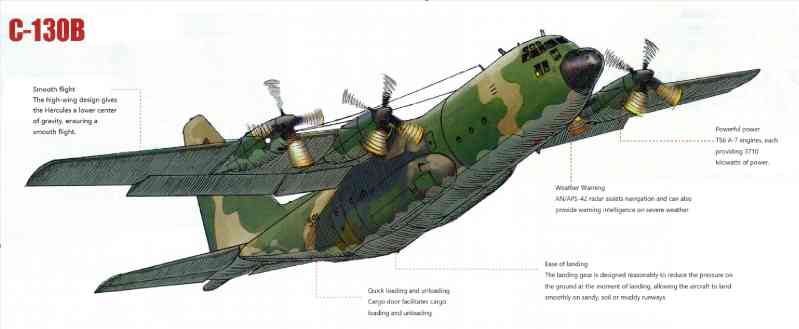
The coupling logic of engineering technology and military needs
Although the U.S. military’s interest in aircraft was documented as early as 1908, it was not until World War II that the ability to transport large numbers of troops or cargo at once proved to be tactically critical. Throughout World War II, the Allies used Douglas C-47 "Skytrain" transport aircraft to great effect in transporting personnel, cargo, weapons, ammunition and supplies across battlefields.
Today, strategic and tactical air transport capabilities have become one of the cornerstones of U.S. military power. Eric Shinseki, who served as the U.S. Army Chief of Staff from 1999 to 2003, proposed to send a fully armed brigade to any place in the world within 96 hours, a division within 120 hours, and a corps within 30 days.
Without the support of strong air transport capabilities, it would be impossible to realize this bold idea. Even if you have the most powerful military in the world, if you can’t deliver it to the right place at the right time, then these military forces are equivalent to non-existence.
This is the value of military air transport, and reaching any place in the world is the special mission of tactical transport aircraft
So far, it is still unclear who can take over the position of C-130 in the future. Perhaps a tilt-rotor aircraft like Bell V280 "Warrior" is a strong competitor. Maybe it’s just like what people often say: the best replacement for C-130 is another C-130.



